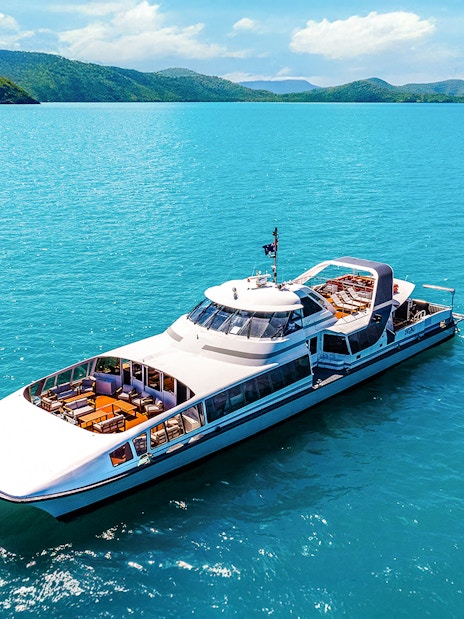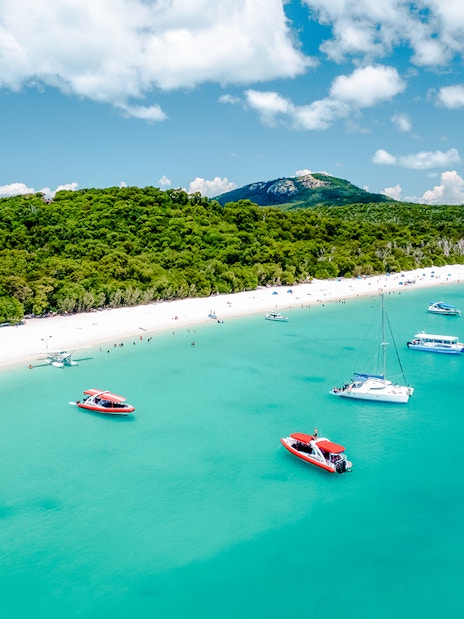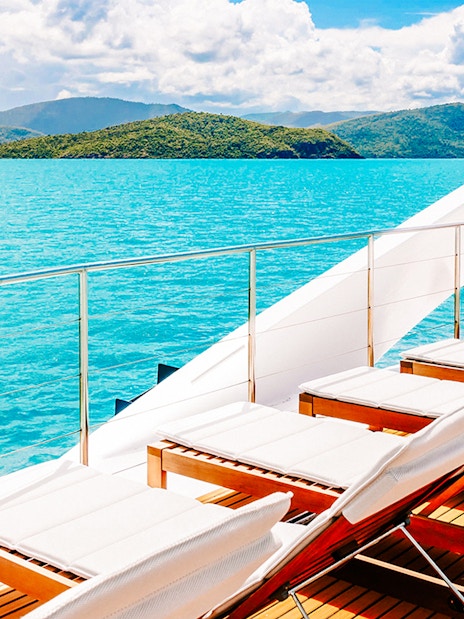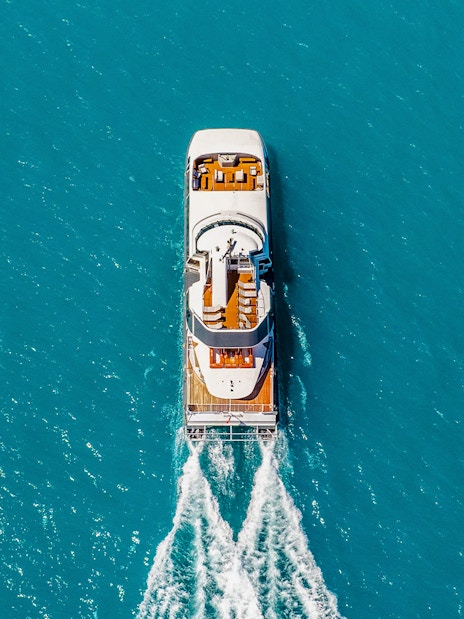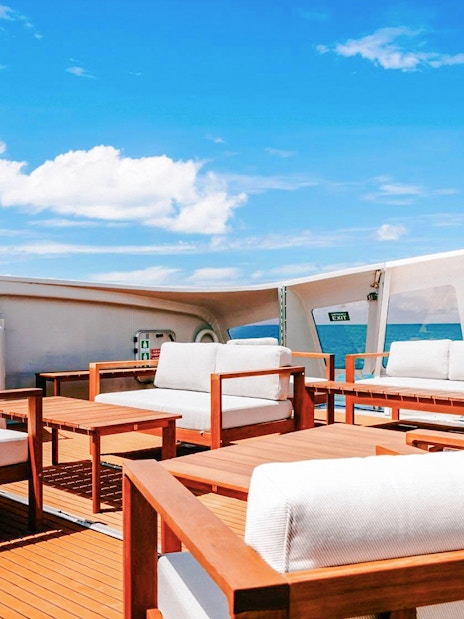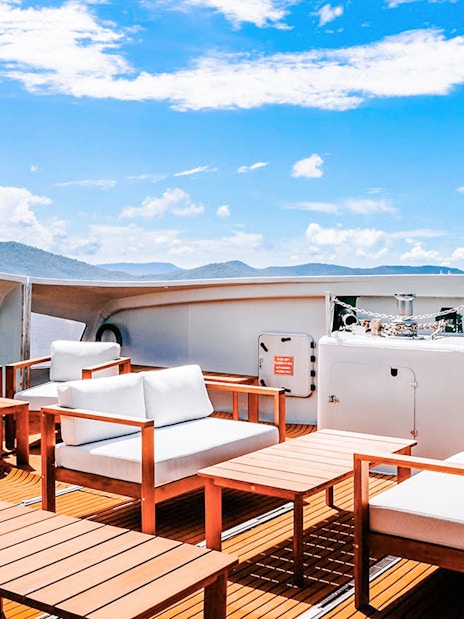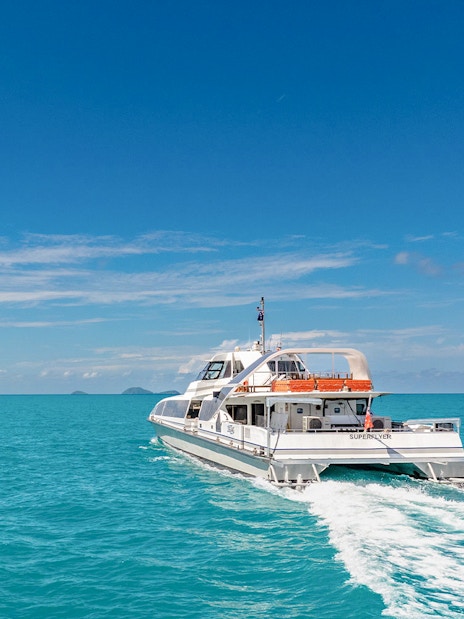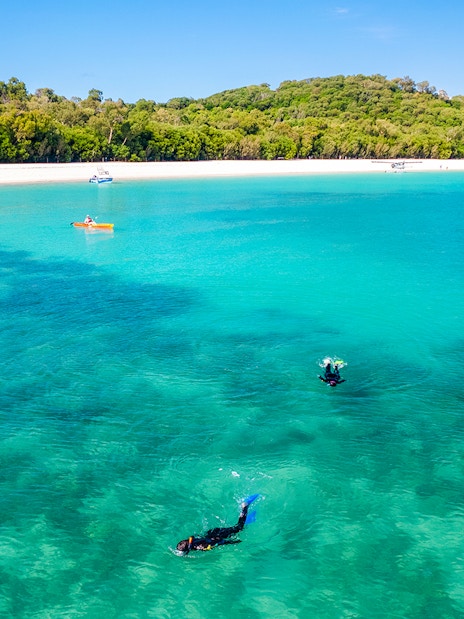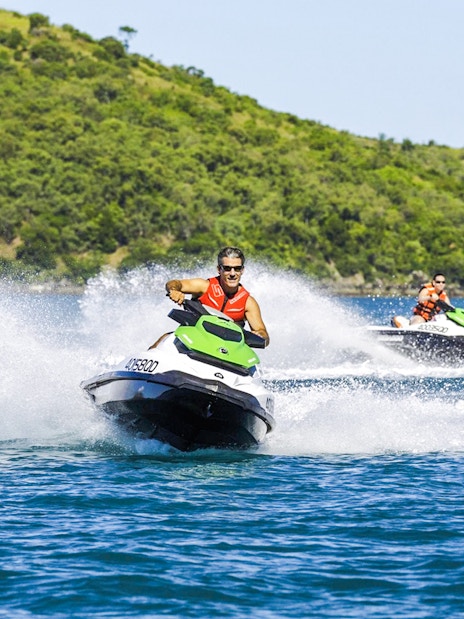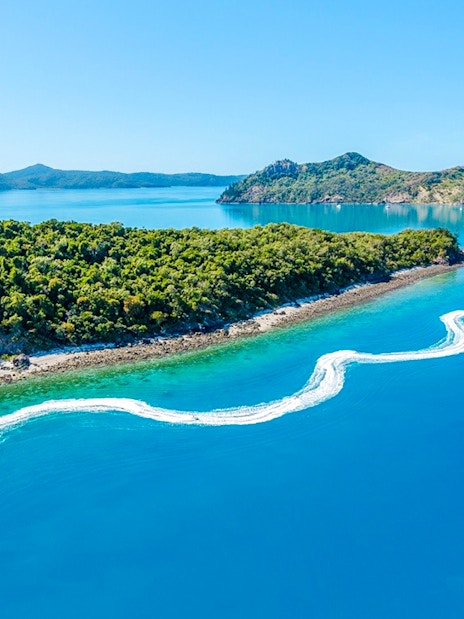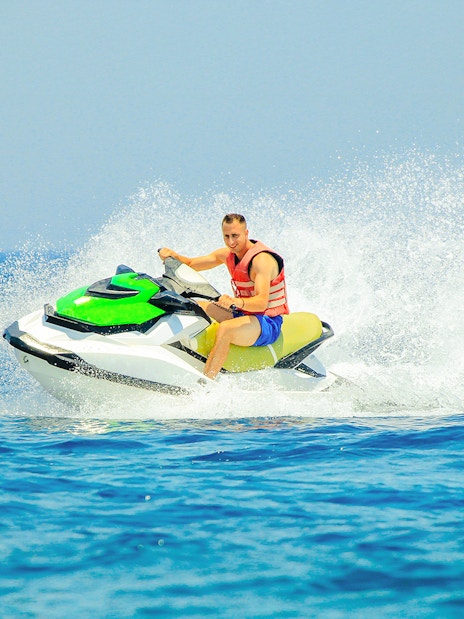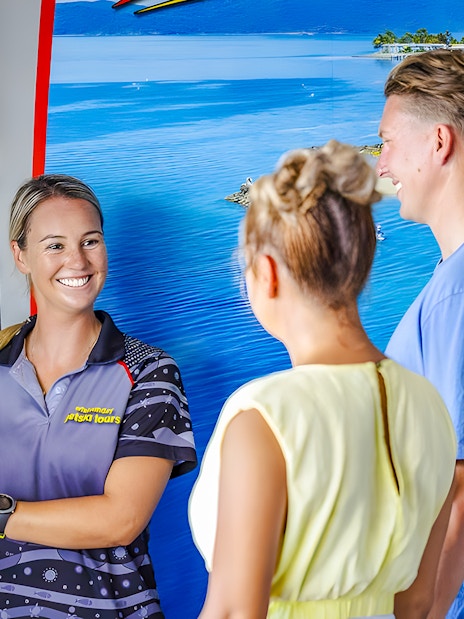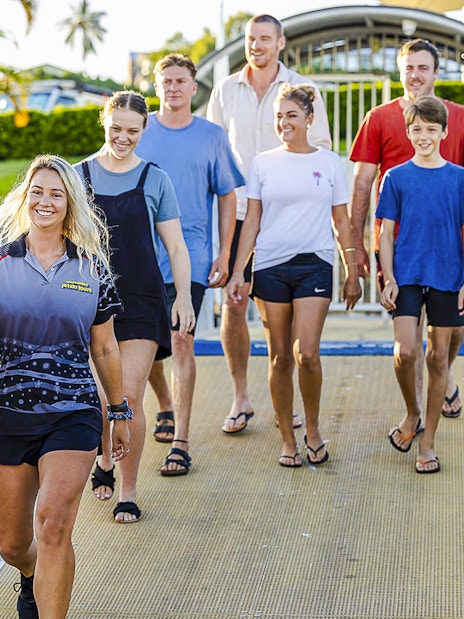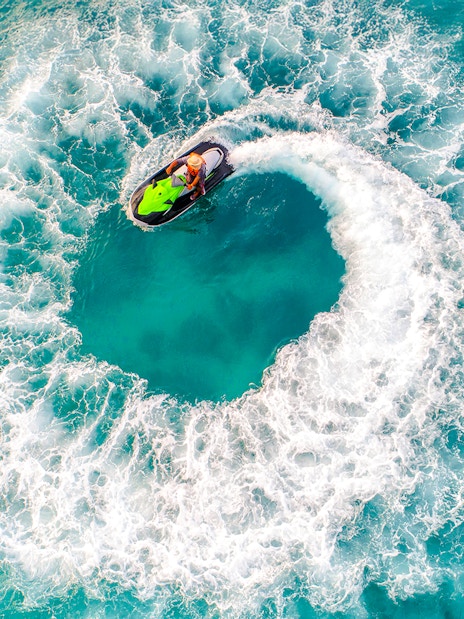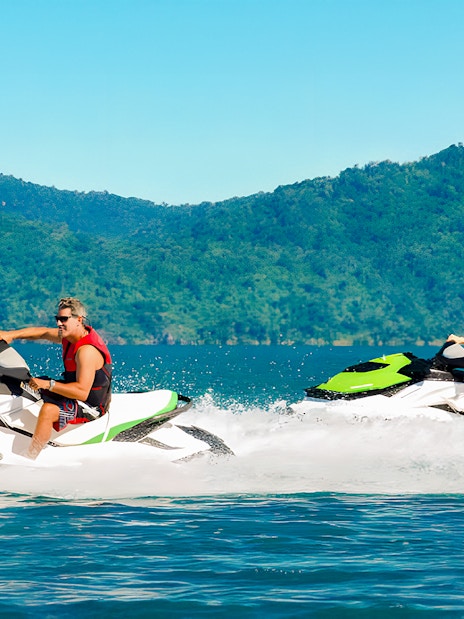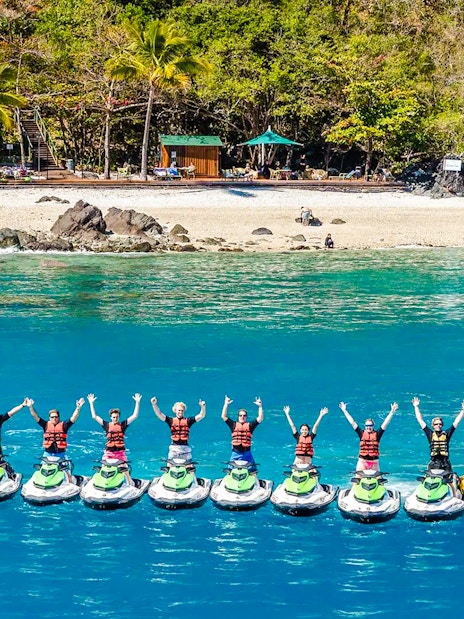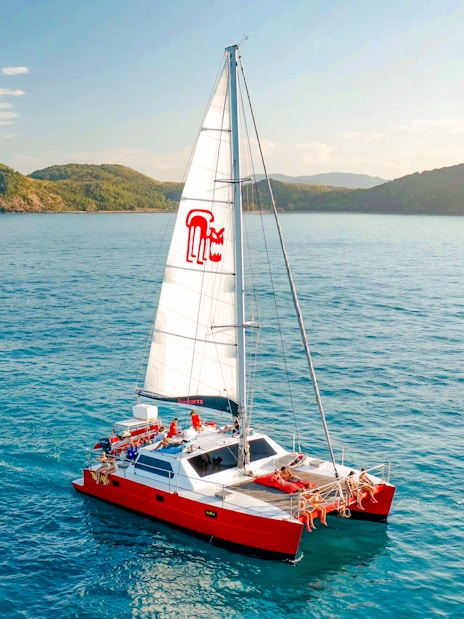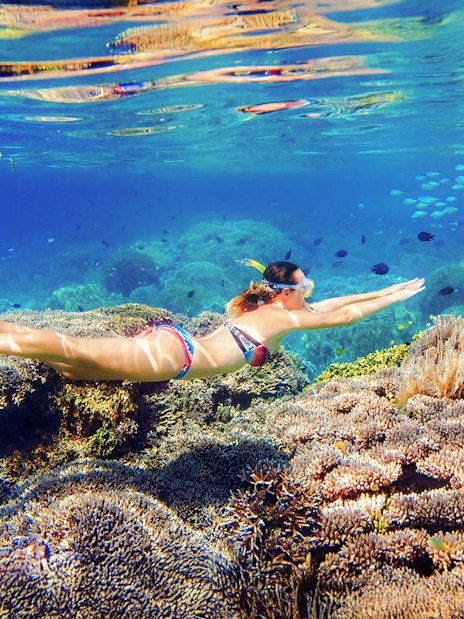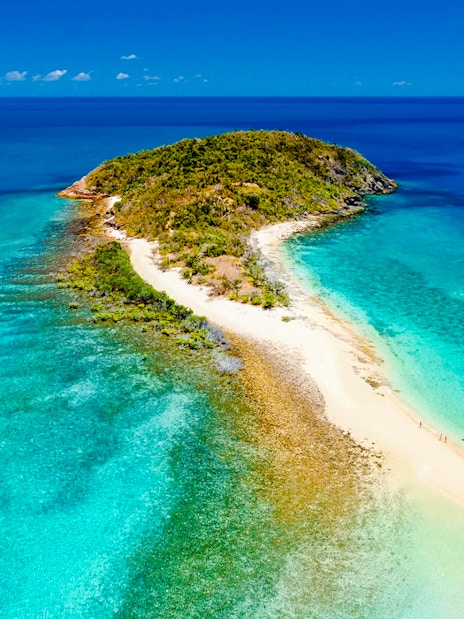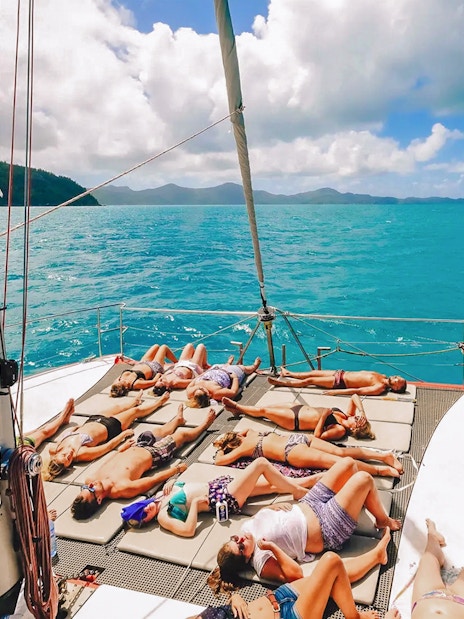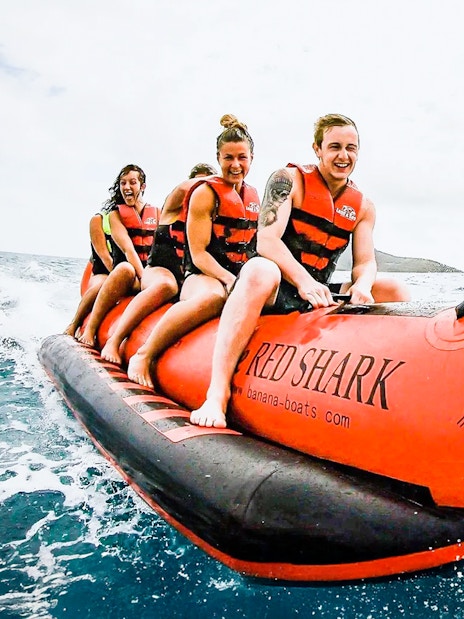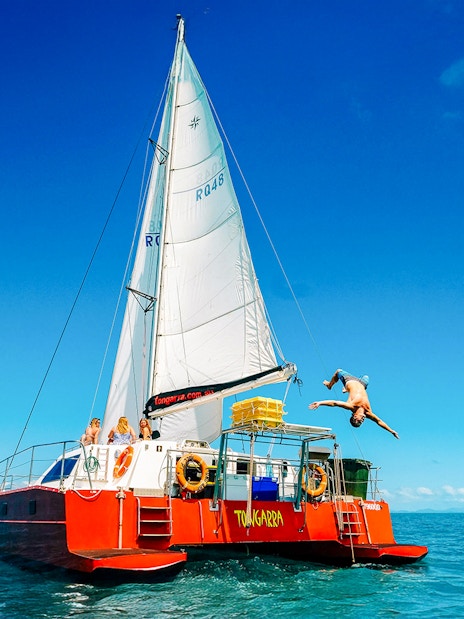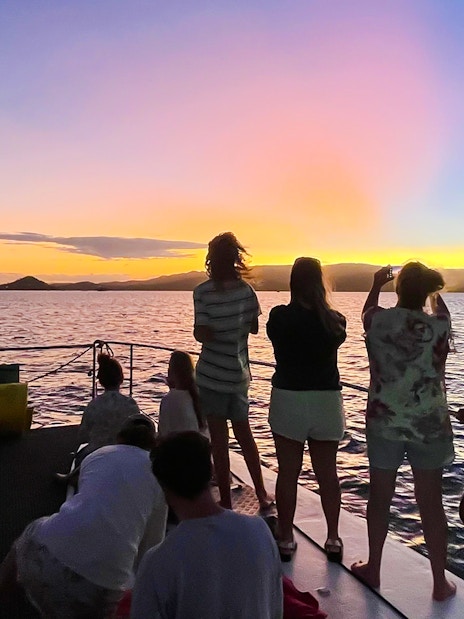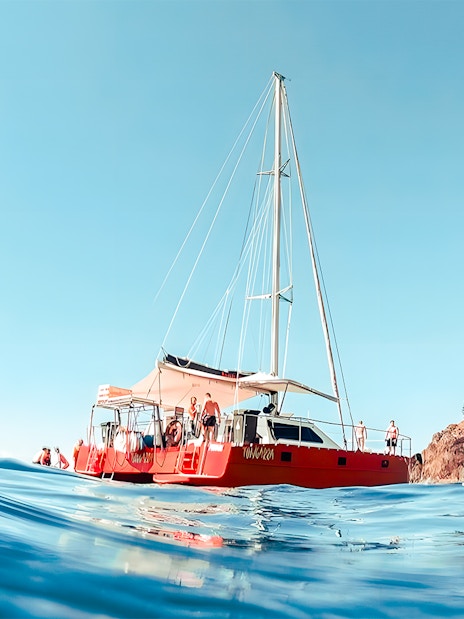Staying safe in the water
Lots of people snorkel in the Whitsundays every day, even during stinger season, and most have no problems at all. Stingers prefer warm, shallow, and calm water, so it’s safer to swim at deeper reef sites or in netted beach areas. Wearing a Lycra suit almost removes the risk, while also protecting you from sunburn and keeping you warm in the water.
Tour crews are always ready too. They watch the water from the platforms, carry vinegar for stings, and explain safety rules before you get in. The main thing to remember: never use freshwater, ice, or alcohol on a sting—it makes it worse. Only use vinegar. If you are stung, stay calm; the pain usually subsides within half an hour, and hospitals have effective treatments available if needed.
Easy Safety Tips
- Cover up: Wear a snug Lycra suit or thin wetsuit. Make sure hoods, sleeves, and cuffs stay in place while you swim.
- Swim inside nets: Beaches like Airlie Lagoon and Boathaven Bay set up stinger nets from November to keep swimmers safe.
- Pay attention to crew talks: The crew will explain the risk level and how to get in the water safely.
- Use vinegar only: Vinegar stops the sting instantly. Boats always have bottles on board. Know where they’re kept.
- Speak up quickly: If you feel unwell after a sting (like back pain, nausea, or feeling anxious), tell the crew straight away so they can help.
.svg?auto=format&w=156&h=48&q=90&crop=faces&fit=crop)
